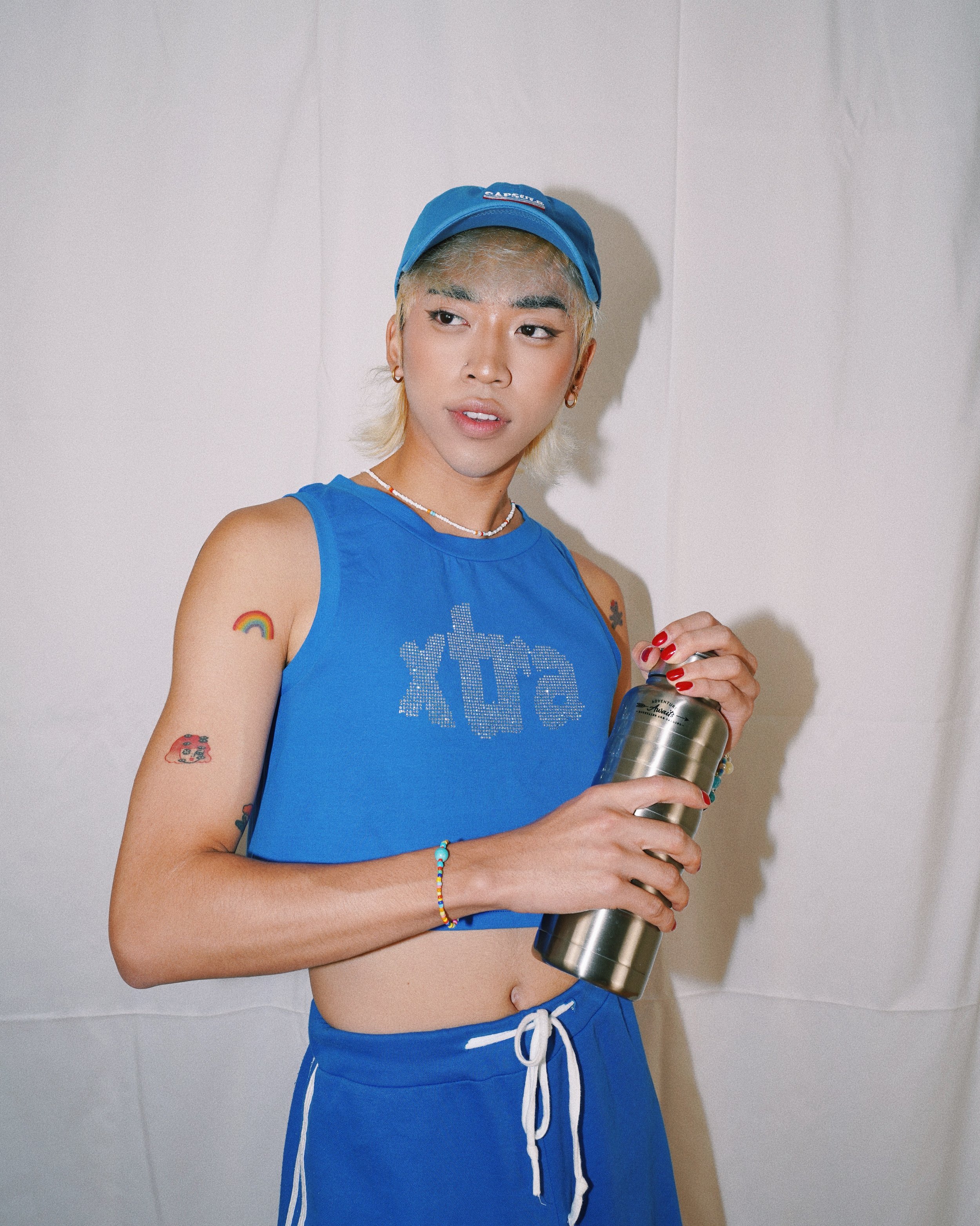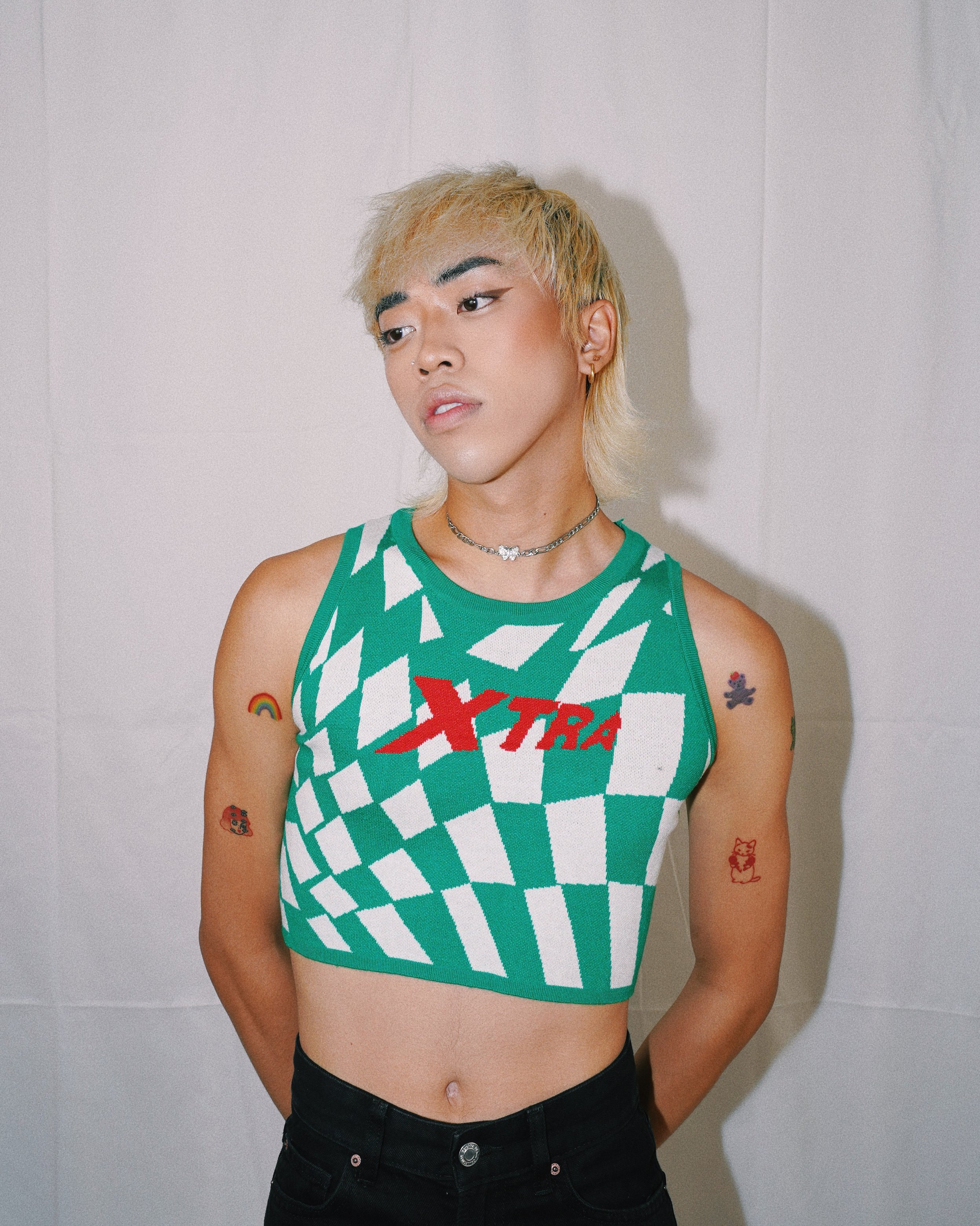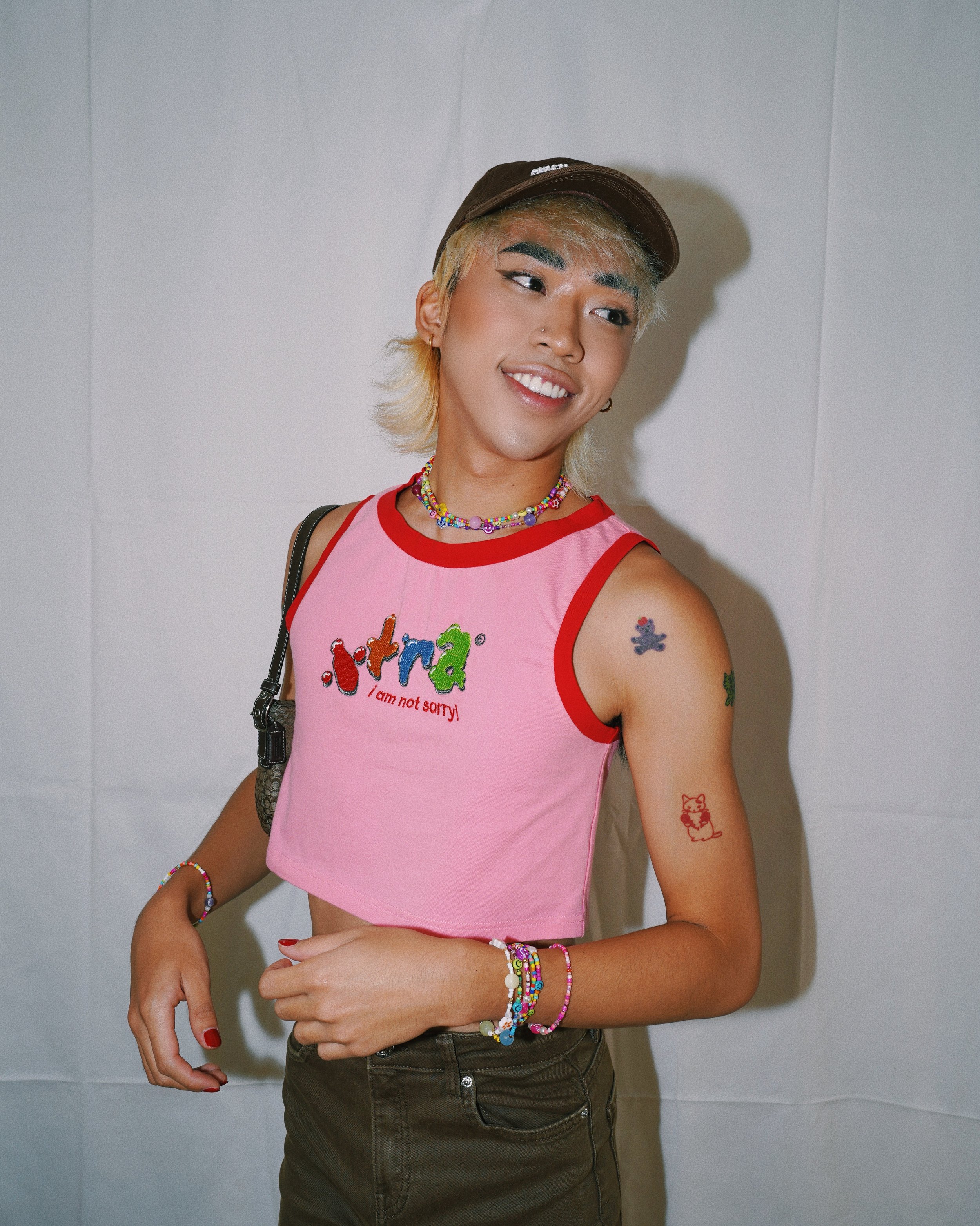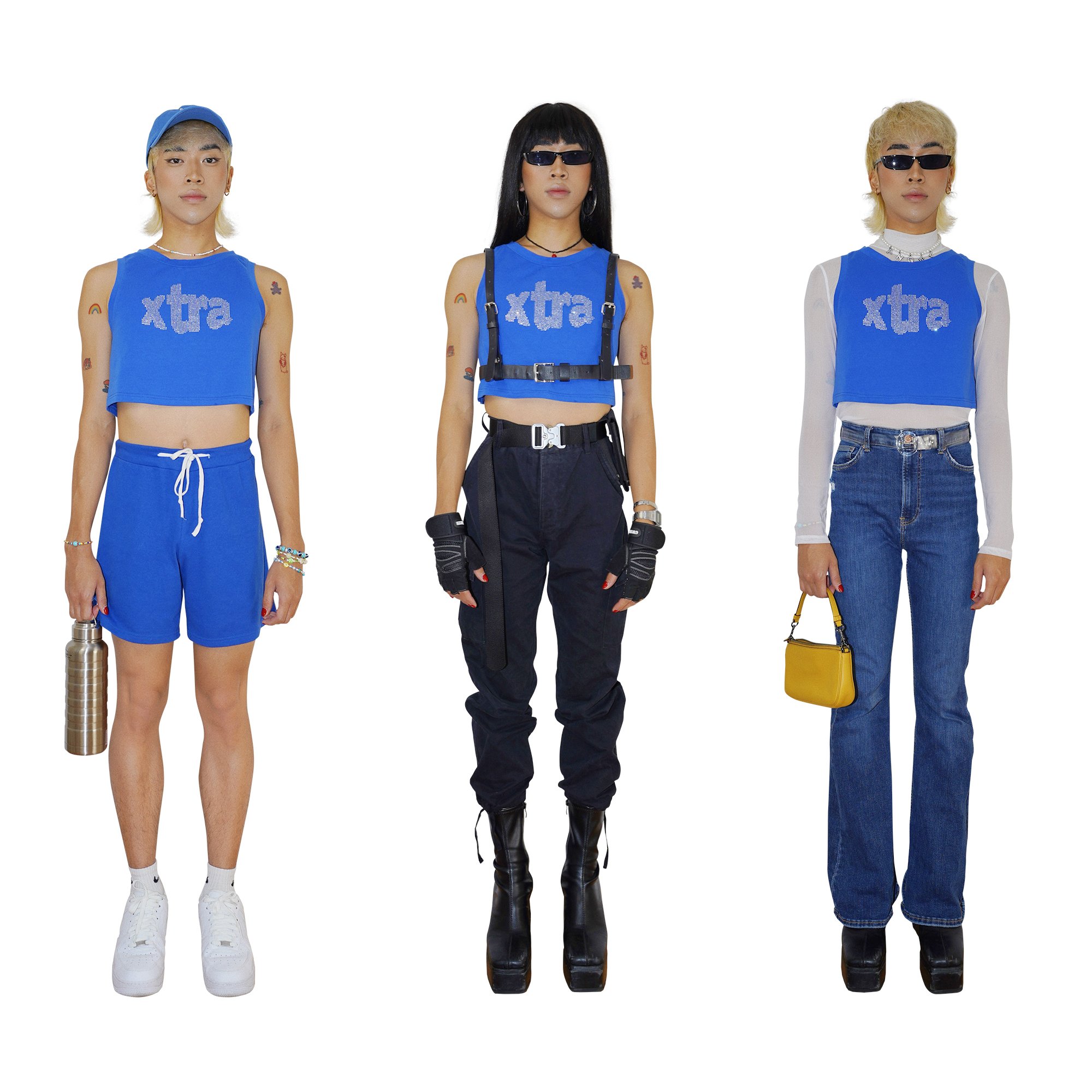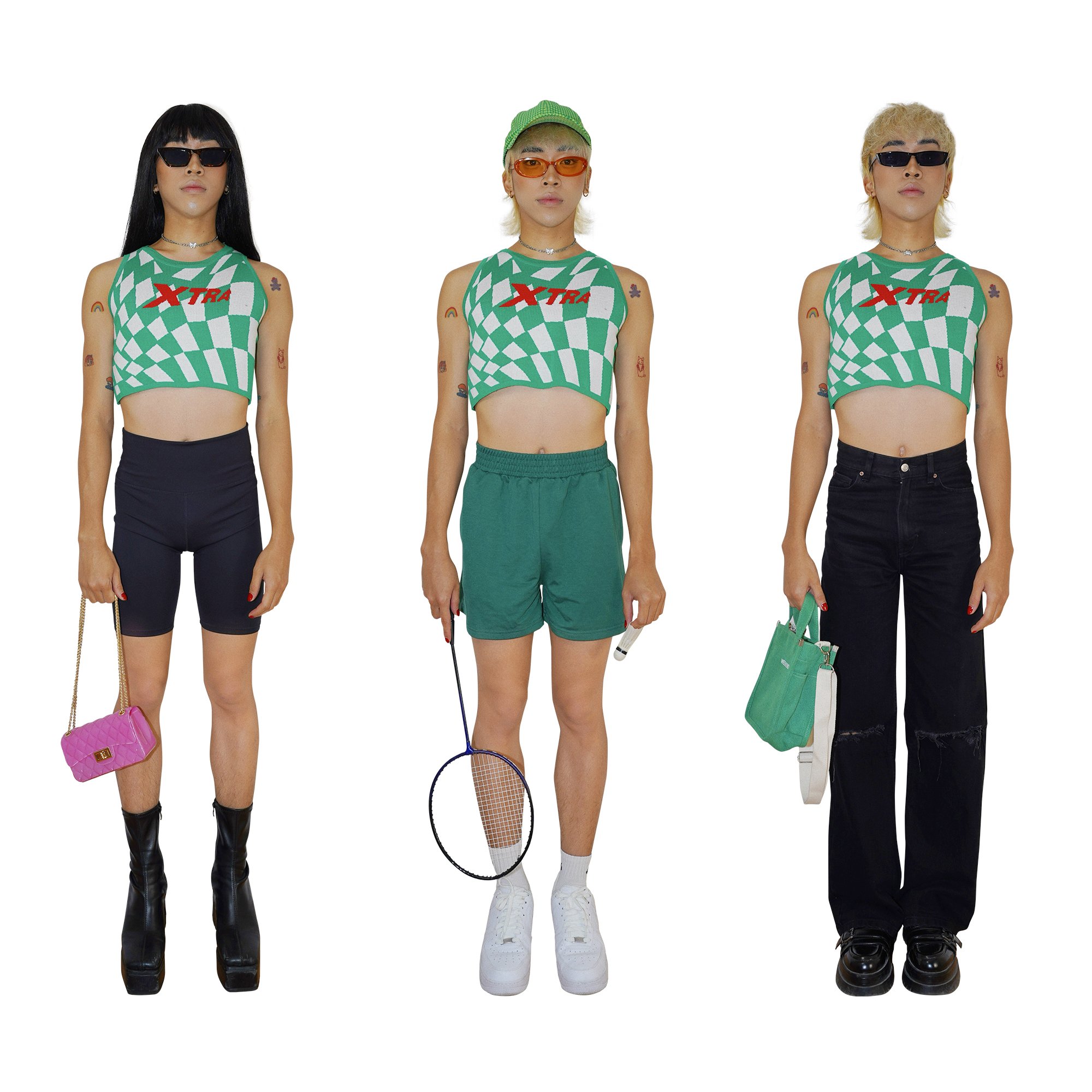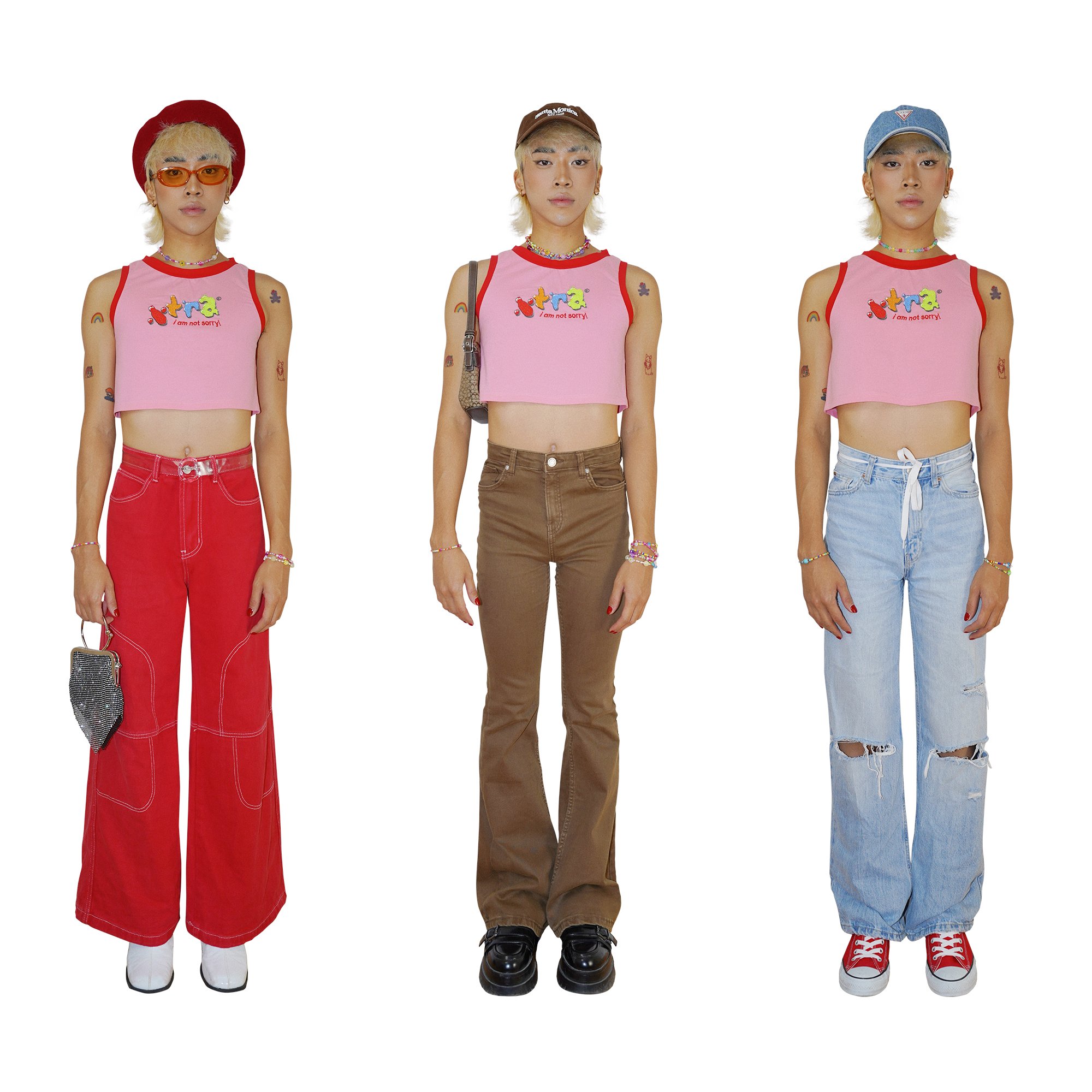ByXtra Wants You to Crop Gendered Clothes
Last February, whilst I was remotely trying to improve my Japanese language skills, YouTube recommended I watch a video titled “The Truth About Being Gay in Japan”. After I clicked on it, I was provided with one of the best inside sources about fashion and Japanese youth culture — World of Xtra. Alas, algorithms actually proved to be good!
Striding in the neon-dabbled boroughs of Shibuya, Shinjuku Ni-Chome and Harajuku, Stan Fukase, the Japanese-Filipino creator of the YouTube channel World of Xtra, sticks out in bright-coloured crop tops, platform boots and ever-changing chameleon hair. Known for his comical aura, outspoken social commentary and candid personality, Fukase has been exponentially growing his audience over the last four years.
“Seeing Stan skip around in hot pink while everyone stares at him in neutral tones is such a main character moment” reads a comment left by one of his viewers. Having such a loud personality in a homogenised Japanese landscape sometimes attracts negative comments or stares, but he uses these as comedic value in his videos through meme-like sounds or unexpected zooms on the faces of those who stare at him.
Such occurrences are common for Fukase. The creator runs counter to the Japanese proverb “The nail that sticks out gets hammered down” and challenges homogenous traditional values that are no longer applicable to contemporary times. He sticks out for not conforming to preconceived ideas of gender and his flamboyance and self-expression have been translated into his daily fashion from his earliest recollections. In memories of weekend mall trips, he reminisces:
“I didn’t just wear what my parents bought me.’ It was funny because my mom always wanted to rest and stay home on the weekends, but I always wanted to go window shopping. Being so young and clueless, of course, my outfits weren’t anything groundbreaking or even cute for that matter. I just knew I felt so confident in my outfits going out. My favorite outfit at the time was this neon yellow Adidas t-shirt paired with white shorts and Adidas Superstars — my dad’s favorite shoes when he was younger as well.”
Fukase and his younger brother Stewart have found support in each other that very few have. Such sense of positive kinship and brotherhood has helped to ignite Fukase’s desire to share his love of fashion. “Growing up, I was very obsessed with pageants and fashion shows. I remember secretly watching them with my little brother when we were both closeted, even from each other. Sometimes, we would recreate outfits with blankets and beddings from our bedroom”. For both therapeutic conversation and belly-aching laughter, I would highly recommend watching his videos of dressing up his family.
Being gay can allow one to explore fashion and burst the bubble of performative gender through clothing choice, but it can also be a counterintuitive process. To a certain point, queer people have always been at the forefront of fashion trends. Clothing provided the community an outlet to express themselves. Yet Fukase is sensibly cautious of equating sexuality with clothing. “Everyone is so quick to define someone’s sexuality based on what they wear — why should someone’s sexuality be anyone’s first thought about that person at all to begin with? I guess what’s important to remember is that fashion is very personal to a lot of people like me, and it is up to no one else but the person to define what their fashion means to them. Fashion should never be generalized”.
In one video where Fukase “unlocks his little brother’s potential” and confidence via heart-warming conversations, a makeover, and “pussy stunting”, he reiterates his point. “Just because we’re gay we don’t owe you androginy; we dont owe you flamboyance; we don’t owe you ‘yas gaga’! But if that is what someone wants to be, let them be it”.
Researchers studying Gen Z, a generation that Fukase and I are part of, have noted that our peer group no longer sees the value of gendered expectations. “I’m not sure they see the purpose of strict gender norms, which were historically derived from a place of disequilibrium and restrictive societal structures. This generation questions the need for systems that don’t serve them (or society at large), and challenges the way things have always been to move us toward more future-oriented thinking” states Corey Seemiller, Professor at Wright State University.
Fukase embodies this idea by differentiating himself from the crowd. “People here wear very basic outfits with the same shades and tones. Japanese people are also very conservative and hate showing skin”. Thus, he made the crop top his staple piece. Having an extreme fondness for bright colours, body-hugging silhouettes and bare skin, Fukase dons a diverse collection of the items and proudly states that the majority of them are thrifted.
Crop tops have traditionally been designated as women’s wear, but the midriff-exposing piece was initially designed for American footballers. Nonetheless, crop tops have been gaining traction in the fashion world. Recently, Miu Miu, Fendi and Ludovic de Saint Sernin have all showcased male or androgynious models rocking different crop tops. This phenomenon can also be observed on niche Instagram or TikTok accounts. The crop top, whether it is knitted or bedazzled, is everywhere and no longer solely on women.
Seemiller sees this trend as a direct response to the revision of archaic ideas that occurred when the pandemic changed our lives and our perspectives dramatically. “With clothing, that means that they [Gen Z] want a diverse array of clothing offered in a variety of sizes and styles. And, clothes that can be customized or altered by them or others allows them to express their own uniqueness. They also tend to push back on men’s versus women’s clothing as many see clothing as a personal choice that should not be limited by society’s perception of gender”.
When I ask Fukase about the admiration the Western fashion industry has for the Japanese choice of style, his response surprises me. Using the notorious Kawaii or Lolita fashion as an example, he muses “of course, that’s what people see in the media because the internet portrays the image of Japan they want everyone to see. I honestly feel like Japanese fashion isn’t necessarily inspiring my fashion or byXtra for that matter — rather, I feel like I’m going against Japanese conservative fashion standards. I’m a cis man wearing cropped tank tops with tattoos all over his arm…that is not very Japanese of me”.
ByXtra is Fukase’s latest endeavour. The clothing line cultivates his love of self-expression and creativity. His favourite piece, the crop top, is the main character of his first collection given its versatility and reminiscence of endless nights partying without pandemic restrictions. “Take for example a plain black cropped tank top. Pair it with running shorts, and you can go to the gym; pair it with flared leather pants and a cropped jacket, and you can go to an event; wear it with jeans and a baseball cap, and you can go have brunch with friends; maybe wear biker shorts and boots with it, and you’re set for a club night.” Fukase also plans to make jumpers, shoes, and bags in the future, turning byXtra into a non-gendered fashion brand. He continues to keep it humble at certain moments as well - “I also want to add a thrift store section where I sell my old clothes because a lot of people ask me where I get my clothes from but they are also mostly thrifted”.
The brand is named after Fukase’s Drag Queen, Xtra, whose powerhouse performances in Tokyo are the intro to his Youtube videos. The brand’s motto “Clothes Have No Gender” personifies Fukase’s beliefs in questioning “the division between a men’s line and a women’s line.” He notes,“ I hate how clothes are gendered. In the world today, most things are gendered—from shampoo to body wash; skincare products to makeup; and even pieces of fabric that we put over our bodies—clothes. Anything that diverts from the “norm of a gender,” right away, has to speak on our identity…but it doesn’t have to”. His new brand sells three crop tops: a knitted vest with distorted green-and-white checkerboard print that has the brand’s name embroidered in crimson; a crop top in bubblegum pink with cherry-red details on the hemlines that has the brand’s name embroidered in capital letters at the chest; or a crop top in royal blue with the brand’s name made of rhinestones.
If you start to peruse what makes a garment “feminine” or “masculine” you might end up at the tipping point of this discussion: how we learn and comprehend gender dynamics. Crop tops themselves are interpreted differently depending on one’s gender. For women, they are deemed sexy or overly sexual. For men, they are considered an obscene display of homosexuality. How midriffs became such a controversial body part is unknown to me, but for me and many other Gen Z members Fukase offers an alternative to this binary. “My goal is to create clothing regardless of gender. Let men wear cropped tops and skirts. Let women wear vests and baggy clothes. Fashion is about your individuality and self-expression — not necessarily your gender”.
As Xtra does death drops while performing under the bioluminescent lights of Tokyo’s queer scene, Stan Fukase rises to conquer his boundless stage on his own terms.
You can buy byXtra’s first limited collection here.
__
Images courtesy of byXtra.

